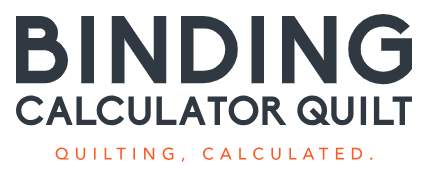Border & Sashing Calculator
Calculate the exact amount of fabric needed for sashing strips and borders to finish your quilt beautifully
Border & Sashing Calculator
Quilt Center Dimensions
Enter the dimensions of your quilt center (before adding sashing or borders)
Fabric Settings
Sashing (Optional)
Borders (Optional)
Understanding Sashing & Borders
What is Sashing?
Sashing refers to the strips of fabric that separate individual blocks in a quilt. Sashing serves several important purposes:
- Visual separation: Creates breathing room between busy block patterns
- Size adjustment: Helps you reach a specific quilt size without making more blocks
- Design element: Adds contrasting color or frames each block
- Simplifies construction: Makes it easier to square up individual blocks
Sashing Strip Calculations
To calculate sashing fabric, you need to know your block layout (number of blocks horizontally and vertically). The calculator determines:
- Horizontal strips: These run between rows of blocks. You need one strip for each space between rows, plus strips for the top and bottom edges.
- Vertical strips: These run between columns of blocks. You need one strip for each space between columns, plus strips for the left and right edges.
- Strip length: Each strip should be the length of your finished block size plus seam allowances on both ends.
Example: For a 4×5 block layout, you need 5 horizontal sashing strips (between 5 rows) and 6 vertical strips (between 4 columns). If blocks are 10" finished, each strip should be cut at least 10.5" long (adding 0.25" seam allowance on each end).
Cornerstones
Cornerstones (also called "posts" or "sashing squares") are small squares placed at the intersections where sashing strips meet. They:
- Add visual interest and can introduce accent colors
- Simplify construction by breaking long sashing strips into smaller pieces
- Are typically the same width as your sashing strips (e.g., 2" cornerstones for 2" sashing)
- Number of cornerstones = (blocks horizontal + 1) × (blocks vertical + 1)
Understanding Borders
Borders frame your quilt and can dramatically change its final appearance. Key considerations:
- Multiple borders: Many quilts have 2-3 borders of different widths and colors
- Border width: Common widths range from 2" to 6", with larger quilts often having wider borders
- Measuring: Always measure through the center of your quilt, not along the edges, to prevent wavy borders
- Order matters: Each border adds to the dimensions, so calculate them in the order you'll sew them
Mitered vs. Straight Corners
Straight (Butted) Corners
- Simpler to construct
- Two strips meet at a right angle
- Requires less fabric
- Best for beginners
- Top/bottom sewn first, then sides
Mitered Corners
- More professional appearance
- 45° diagonal seam at corners
- Requires extra fabric (typically 2× border width per strip)
- Essential for striped or directional fabrics
- Takes more time and precision
This calculator includes an option for mitered corners, which automatically adds extra length to account for the diagonal seams.
Fabric Cutting Tips
- Fabric direction: For borders, consider cutting lengthwise (parallel to selvage) to minimize seams. This may require more yardage but gives uninterrupted strips.
- Seam allowances: Standard quilting uses 1/4" seam allowances. The calculator includes these automatically.
- Fabric width: Most quilting cotton is 42-44" wide. Wider fabric (54-60") is less common but useful for large borders.
- Waste factor: The calculator adds a percentage for cutting mistakes, fabric shrinkage, and flaws. 10% is standard.
- Pre-washing: If you plan to wash your finished quilt, pre-wash and press your fabric before cutting to account for shrinkage.
Planning Your Quilt Finish
Use this calculator as part of your overall quilt planning:
- Start with your finished block size and layout using the Block Layout Calculator
- Determine if you want sashing and cornerstones (width and color)
- Plan your border sequence (how many borders, widths, colors)
- Use this calculator to determine exact fabric requirements
- Calculate total fabric needs using the Fabric Yardage Calculator
- Don't forget binding! Use the Binding Calculator to determine binding fabric
Common Sashing & Border Widths
Sashing Widths:
- • 1.5" - Narrow, subtle separation
- • 2" - Most common, versatile width
- • 2.5" - Slightly wider, good for busy blocks
- • 3" - Bold, makes a statement
Border Widths:
- • 2-3" - Inner borders, accent strips
- • 4-5" - Medium borders, common for mid-size quilts
- • 6-8" - Wide borders for large quilts
- • 1-1.5" - Thin "flange" or piping borders
Have questions about sashing or borders? Check our FAQ or contact us for help.
